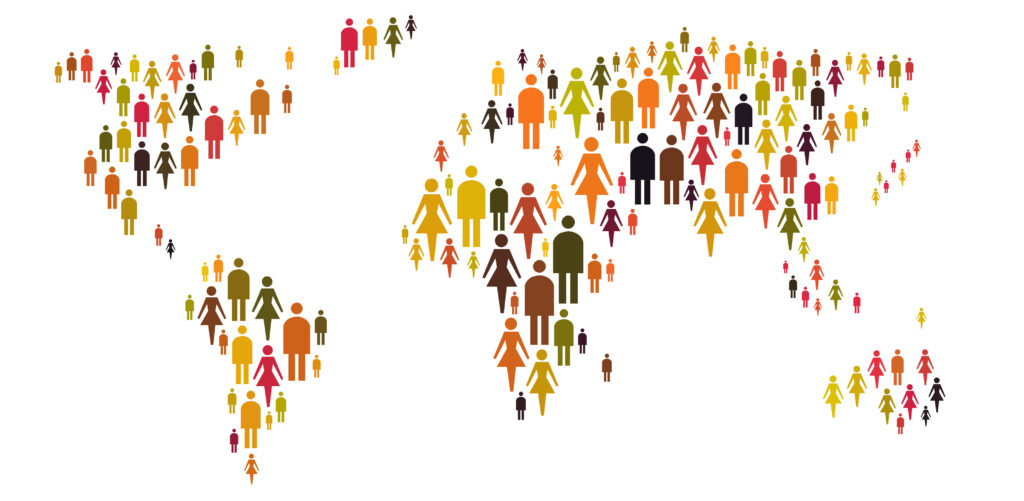Around the world governments are facing populations that are getting increasingly older. Recent estimates suggest that by 2050 for every 100 working age adults, there will be 56 persons aged 65 or older. This is coupled with rising socioeconomic inequality between and within generations and increasing prevalence of chronic conditions. These dual demographic and economic trends have important implications as governments weigh health spending trajectories, pensions, and other social programs.
Led by experts at the Leonard D. Schaeffer Center for Health Policy & Economics at the University of Southern California, economists and researchers from Europe, Asia, and North America have collaborated to develop country-level economic-demographic models that predict health and economic outcomes and can be used to evaluate the consequences of these trends and simulate effects of proposed policy changes.
“Working with the OECD and this global network of economists is an unprecedented example of the ways in which research can inform policy decisions,” said Schaeffer Center Director Dana Goldman. “By leveraging data and sophisticated modeling tools we can better predict trends and simulate how changes in policy might affect future generations.”
Grounded in a report released by the Organization for Economic Cooperation and Development (OECD), these researchers will present their latest findings and what they mean for policymakers on April 5th at the OECD in Paris, France.
Keynote presenters include Nobel Laureate James Heckman and Peter Orszag, former director of the United States Office of Management and Budget.
Measuring Across Countries
Though countries around the world are facing similar demographic trends due to significant gains in life expectancy and decreased fertility rates, societies are adapting to these changes in different ways. Goldman collaborated with colleagues to establish an aging index that ranked OECD countries along five domains including measuring of cohesion, productivity and engagement, well-being, equity, and security.
“The tool allows countries to take a more comprehensive view of current conditions that affect aging populations and as well as evaluate specific areas that should be prioritized to ensure the country is prepared to support future generations,” said Goldman, who is also a USC Distinguished Professor.
The researchers find that overall, Norway ranked highest followed by Sweden, the United States, the Netherlands, and Japan. The Index is more robust than past measures of societal aging which would only take into account two or three indicators or compare or a small number of countries.
Preventing Aging Unequally
Looking ahead, the OECD report predicts that younger generations are increasingly at risk of facing poverty if current trends persist. This is because inequalities in educational attainment, income, and health status compound from early ages, leading to more acute inequality in old age. Furthermore, younger generations are more likely to have gaps in employment and less robust pension and retirement savings than previous generations.
The Schaeffer Center partnered with the OECD and the Centre for Economic and International Studies at the University of Rome Tor Vergata to develop a pilot model (Global FEM) that projects the health and economic circumstances of population cohorts in Belgium, Italy and the US to assess how current income inequalities throughout the lifespan. Their work also examines the role of inequality in life-expectancy trends on social benefits.
The April 5th conference, titled “Impact of Inequality on the Future Elderly – Policy Tools and Actions,” will focus on the findings from this project as well as research conducted in Korea, Singapore, Canada, and Mexico, and what these findings mean for policymakers.
Using Big Data to Predict Global Trends
The foundation of this research is a global simulation platform developed by Dana Goldman and Bryan Tysinger at the USC Schaeffer Center. Through the collaboration with the OECD and participating researchers from universities in various countries, microsimulation models have been developed that allow a global analysis of aging trends.
At the core is the USC Schaeffer Center’s Future Elderly Model (FEM), an economic-demographic microsimulation model that projects a rich set of health and economic outcomes for ageing populations. The FEM is housed with the Roybal Center for Health Policy Simulation, one of 10 Roybal Centers established by the National Institute on Aging to move promising social and behavioral research findings out of the laboratory and into programs, practices, and policies that will improve the lives of older people and the capacity of society to adapt to societal aging.
Over the past decade the FEM has been employed to explore a variety of policy questions including assessing the distributional impact of disparities in life expectancy; analyzing impacts of global pharmaceutical policy and health; consequences of obesity and other chronic conditions on older Americans; and the value and cost of delayed aging and medical innovation. Results of these explorations have informed government agencies, the White House, the National Academies of Sciences, and others in setting health policy for an aging population.
Development of the Future Elderly and Future Adult Models have been supported with funding from the National Institute on Aging at the National Institutes of Health under award number P30AG024968 and the Centers for Medicare and Medicaid Services, the Department of Labor, and the MacArthur Foundation.
The mission of the Leonard D. Schaeffer Center for Health Policy & Economics is to measurably improve value in health through evidence-based policy solutions, research and educational excellence, and private and public sector engagement.
